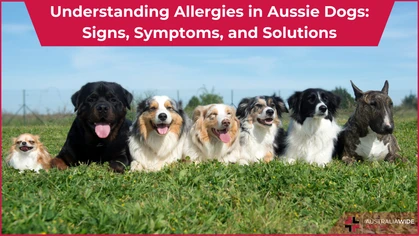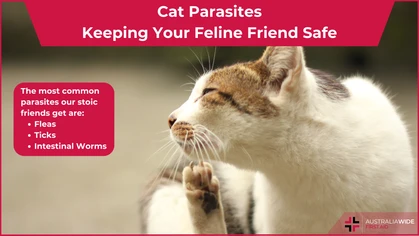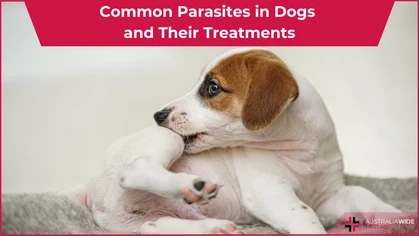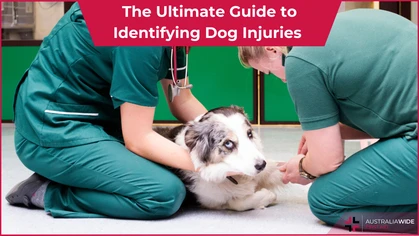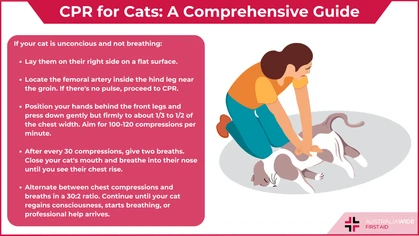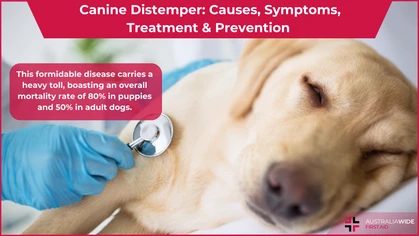Pet First Aid: CPR for Dogs

Pets
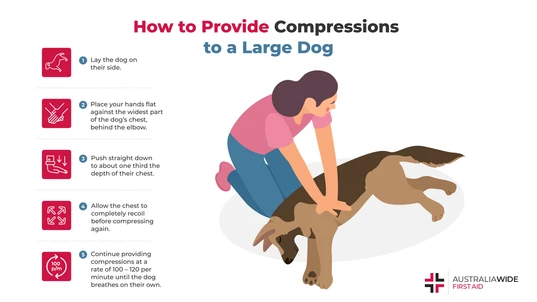
CPR stands for cardiopulmonary resuscitation. CPR is not just an essential first aid procedure for when a person's heart has stopped beating - it can also restore blood flow to a dog who is not breathing or pulseless.
CPR stands for cardiopulmonary resuscitation. Providing CPR to a dog who is not breathing or is pulseless can restore blood flow and save his life. CPR efforts on animals have been documented since the late 1800s. While the techniques have changed over the years, the goal remains the same – to restore or maintain blood flow to vital organs in the absence of a heartbeat, or to oxygenate the lungs.What is CPR?
CPR stands for cardiopulmonary resuscitation. The purpose is to maintain the flow of blood to vital organs and oxygenate the lungs. This is achieved using compressions and rescue breaths. Compressions are a way to manually push blood out of the chambers of the heart and then allow the heart to refill with blood. With compressions, you are manually pumping the heart. Rescue breaths are a way to transfer oxygen from one person to another: or in this case, from one person to a dog. When providing rescue breaths, you should see the chest rise and fall as the lungs fill with air. Evidence suggests that compressions are more important than rescue breaths. For that reason, if you encounter a dog that needs CPR, start with compressions first. And if you are uncomfortable with or unable to perform rescue breaths, it is acceptable to only complete compressions and to skip rescue breaths.When to Perform CPR
A dog needs CPR when he:- Does not have a pulse
- Is not breathing
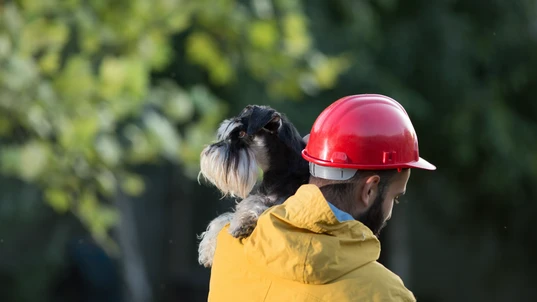
Learning how to perform CPR on your dog could help save their life when they are not breathing or do not have a pulse.
How to Perform CPR
Check for a pulse:
Place hand on the chest behind the left elbow. If you feel nothing after 3-5 seconds, begin CPR. If you feel a heartbeat but it feels slow or very soft, count the beats for 1 full minute or count the beats for 10 seconds and multiply by 6. An ideal heart rate is between 80-100 at rest. If you notice the heartbeat stops, begin CPR.Provide Compressions:
Large Dogs: Lay the dog on his side. Place one hand flat on the widest part of the chest behind the elbow. Stack your other hand on top and interlace your fingers. Push straight into the chest at a depth of 1-3” depending on the size of the dog, or 1/3 width of the chest. Allow the chest to completely recoil before compressing again as this allows the chambers of the heart to refill with blood. Small Dogs: Lay the dog on his side. Place one or two hands around the widest part of the rib cage until your thumbs can be secured around the area of the heart. Squeeze the chest approximately 1/3 width of the chest. Allow the chest to completely recoil before compressing again as this allows the chambers of the heart to refill with blood.Provide Rescue Breaths:
If the dog has a pulse but is not breathing, begin rescue breaths after clearing the airway. If the dog has no pulse, administer 2 rescue breaths after every 30 compressions. Check the mouth to make sure nothing is blocking the airway. Hold the snout closed with two hands, cover the nostrils with your mouth and blow slowly and deliberately. You should see the chest rise and fall. Give 2 breaths. Resume compressions as necessary.- Provide compressions at a rate of 100-120 per minute. This will feel very fast as it is faster than 1 compression per second.
- Sometimes ribs break during the process of providing CPR. This is okay, keep going. A broken rib will heal. It is more important to maintain blood flow.
- You will be tired if you are performing compressions appropriately. Whether you are using the force of your body on a large dog, or the strength of your arms for small dogs, you should feel your muscles burning and you will likely be short of breath. It is best practice to trade off compressions every 2 minutes with another person if able.
Revival
Continue providing CPR and rescue breaths until your dog breathes on his own. If after 5 minutes there has been no change, take him to a veterinarian immediately. Chances of revival after 5 minutes of effective CPR are very low.What to Do After CPR
If your dog regains consciousness he may be disoriented and/or aggressive. Be sure to give him space to reorient. Allow him to stand, lie down, or walk as he wants to. Dogs are highly intuitive and will usually do what is best for their bodies. Even if your dog appears recovered, take him to a veterinarian for a professional assessment.Final Thoughts
CPR for dogs is remarkably similar to CPR for humans. For that reason, taking a CPR course from Australia Wide First Aid would provide excellent practice and assessment skills. For more resources and information about first aid for your pets, check out our resource library:
Originally published at
https://www.australiawidefirstaid.com.au/resources/cpr-for-dogs
as part of the Australia Wide First Aid Articles Library
